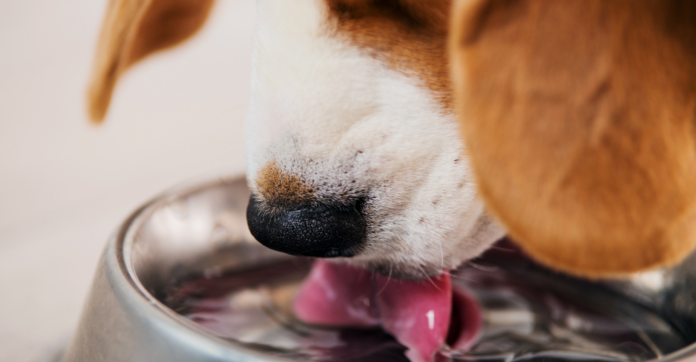The summer heat can be dangerous for people and it can also be extremely dangerous for dogs. A dog’s inability to sweat can make it especially vulnerable on hot Alabama days. The Tribune sat down with local veterinarians Dr. Tony Crider and Dr. Shane Lee to learn more about these dangers and what precautions pet owners should take to keep their dogs safe and comfortable.
Dr. Crider explained, “Heatstrokes are common, especially this time of year when it gets so hot. The main thing is that you have some breeds of dogs that can tolerate heat fairly well and the others absolutely cannot. Any of your short-nosed breeds like Pugs, Bostons, and especially bulldogs. That’s the way dogs regulate their body temperature is through respiration. If they can’t do that with the heat being so high, they will get into a heat stroke situation extremely quick.”
Dr. Crider continued, “If the temperature stays high enough for long enough they are not going to be okay even if you bring them and treat them here. There’s a certain level that if the dog stays hot for that long that even if you can save them initially, they could still die 2 or 3 days later or if you have an acute death and don’t make it. It’s just that serious. It’s a bad deal.
Hopefully, people would notice that but we have those all the time. We see it all the time. Unfortunately, we’ll usually see several deaths a year.”
Dr. Lee stressed, “Make sure they have access to water, cool water, and shade. Walking around on concrete, make sure it’s not exposed for long periods of time. Heatstroke and heat exhaustion can happen from too much running around or too active. If they are anxious dogs or nervous, the more they get worried and the more they start to pant just make sure there is somewhere they can cool off. Keep them calmer or too active. We see it a lot where people are mowing the grass and the dog chases the lawnmower.
The dog may be in the fenced in part of the yard but then as they are mowing, the dog runs back and forth trying to get to them. The more they do that, the more problems we see.”
If you live in an area that experiences increased activity from kids playing or other outdoor activities that cause your dog to exhibit high levels of agitation or energy, be mindful that they are more likely to experience a heatstroke and should have access to a cool area away from the activity.
Dr. Lee points out, “Most of the problems we see with heatstroke or heat exhaustion are typically not a neglectful thing, it’s just more activity than the dog needs to do in the middle of the day. We see heat stroke in the short nose breeds more than we do anything else.”
“Labs, shepherds and other type dogs are more likely to have a stroke due to overexertion type thing. I’ve seen dogs where people have them on runners and they get caught up and struggle you can absolutely see those situations resulting in heat stroke,” Crider said.
What do you do if you suspect your dog is suffering from heat exhaustion or heatstroke?
Symptoms of heat stroke in dogs are:
• Heavy Panting
• Excessive Drooling
• Wanting to lie down
• Fast or Irregular Heartbeat
• Lethargy
• Vomiting and/or diarrhea
• Loss of appetite
• Neurological signs (stroke, stumbling)
Dogs experiencing heat exhaustion or heatstroke need to see a veterinarian immediately. If it happens after hours, Lee reminds people to call the hospital for an emergency vet to be alerted. He advises on some of the best things a person can do in the event of having to wait for a vet, “As far as cooling off, bring them inside where there is some air conditioning and get a box fan or something on them. You DON’T want to get them soaking wet in a pool or a tub or anything like that. The quickest way to pull body temperature back down is rubbing alcohol on their foot pads. Dogs don’t have sweat glands so they don’t sweat like us to exchange heat. But, the foot pads will exchange heat and if you get some alcohol on those to cool those down, it will draw a lot of that heat out of there and get the temperature down a little quicker. You don’t want to do it too fast. You don’t want to put them in an ice bath or ice all over them because that can pull the temperature down too fast and can cause more problems than good.”
There has been some information on social media debating whether ice in the water bowl is harmful to pets. Both Dr. Crider and Dr. Lee agreed that adding some ice to the dog water will not harm a dog. They may experience the equivalent of an “ice cream headache” from drinking it too fast but that’s all.
Summertime also means more outdoor festivals that welcome dogs. Both Dr. Crider and Dr. Lee agree that adult dogs should tolerate these events well as long as shade and fresh cool water are available. This is true for the dogs that are inside the majority of the time. Dr. Crider did recommend having the car nearby for the dog to have access to air conditioning in case you see the dog starting to show problems.
The dogs most at risk in high traffic areas such as festivals or parks are puppies. “You never know vaccine history and you never know which puppies have had something. You never know who has been exposed to something. In the parks where dogs are using the bathroom everywhere, if they haven’t been dewormed, you are prone to getting worm problems. You are prone to getting parvo from places you don’t know. Especially if your dog isn’t vaccinated. The younger puppies, I’d recommend not to take them anywhere. I try not to put my dog down in a public area, in the grass, until it has had its full round of four shots. I can guarantee mine are vaccinated but not anybody else’s,” Dr. Lee said.
The temperatures are expected to be in the 90s this week with the heat index being even higher. Both veterinarians agreed that heatstroke and heat exhaustion can be avoided the majority of the time with some common sense and precautions.



















